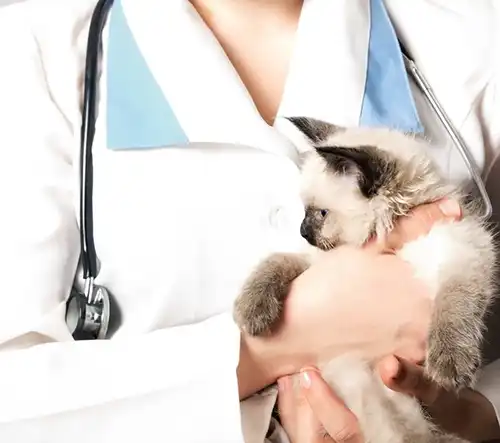Dental health is an essential aspect of your dog’s well-being, impacting everything from appetite to energy levels. Many pet owners, however, overlook the subtle signs of dental disease in dogs, risking their furry friends’ comfort and general health. Early detection is key: watch for indicators like persistent bad breath, discolored teeth, swollen gums, or changes in chewing habits. Studies show that oral issues can lead to infections, pain, and even systemic health problems if left untreated. Regular brushing, routine checkups, and the right diet can prevent these complications, and knowing what to look for is the best first step. In this article, we’ll discuss common dental concerns, explore prevention strategies, and guide you through recognizing when it’s time for professional care. Armed with the right knowledge, you can ensure your pup maintains a healthy, pain-free smile for years to come. By staying informed, you help safeguard their health and happiness.
Did you know that dental issues are very widespread in our canine companions? More than 80 percent of our four-legged pals will have some form of gum disease by the time they reach the age of three. Fido is also susceptible to many other dental problems, such as cracked or broken teeth, abscesses, and misalignments. Your pup can’t tell you if his teeth hurt, so it’s important to be aware of some warning signs. A local Longwood, FL vet lists some of them in this article.
Bad Breath
Bad breath in dogs is often dismissed as normal, but it can be one of the early signs of dental disease in dogs. While it’s true that Fido’s breath is unlikely to be reminiscent of a crisp winter breeze, excessively foul breath should raise concerns. It’s not just about lacking a minty-fresh aroma; a particularly strong odor can indicate underlying health issues. If your dog’s breath is potent enough to make your indoor plants seem like they’re struggling, it might be time to check for other signs of dental disease.
Drool
Some of our canine pals are naturally a bit slobbery. If your pup is suddenly drooling more than he used to, or if you are noticing that his saliva is very thick, ropy, or bloody, there may be something going on.
Bleeding Gums
Bleeding gums are another warning sign of dental issues. You may notice blood on Fido’s mouth, or you may notice dark streaks on his toys or dishes.
Swelling
Any swelling around the face or mouth has the potential to be very dangerous. Infections that close to the brain can be deadly!
Tartar Buildup
Does Fido have brown or yellow gunk built up on his teeth? This buildup is one of the common signs of dental disease in dogs, often indicating gum disease. At the very least, it suggests that those choppers require immediate attention to prevent further oral health issues.
Changes In Eating Habits
Have you ever tried to chew with a toothache? Ouch! This is no more fun for Fido than it is for us. You may notice your furry pal chewing on one side of his mouth, dribbling food, taking longer eating, or starting to show a clear preference for soft foods. In extreme cases, dogs may find chewing so painful that they stop eating altogether, which can be very dangerous.
Behavioral Clues
Dental issues can significantly impact your dog’s well-being, manifesting as signs of dental disease in dogs like altered mood and behavior. Fido may act grumpy or withdrawn, showing less interest in play. Additionally, dogs suffering from dental discomfort often resist having their heads touched, indicating sensitivity or pain in their mouth area. This behavioral change is a clear signal to seek veterinary attention for a dental health assessment.
Signs of Dental Disease in Dogs in 2025
What are the different stages of periodontal disease?
Periodontal disease in dogs progresses through several stages, starting with gingivitis, where gums become red and swollen due to plaque buildup. If untreated, this progresses to early periodontitis, characterized by slight bone loss and gum separation. Moderate periodontitis follows, with noticeable gum recession and deeper pockets around teeth, leading to significant discomfort. In advanced periodontitis, severe bone loss, tooth mobility, and potential tooth loss occur, often accompanied by systemic health issues. Early detection and regular dental care can prevent progression and safeguard the dog’s overall health.
How does plaque form and progress to tartar?
Plaque forms on a dog’s teeth when food particles and bacteria accumulate along the gum line. This soft, sticky substance can be hard to see but acts as a breeding ground for bacteria. If not removed through regular brushing, plaque can harden into tartar within just a few days. Tartar, a yellow or brown deposit, clings to the teeth and can significantly contribute to gum disease by irritating the gums and leading to inflammation. This progression makes thorough dental hygiene crucial for preventing serious dental issues in dogs.
What is the difference between dental problems in dogs versus humans?
Dental problems in dogs differ from those in humans primarily due to the nature of their symptoms and the challenges in detection. Unlike humans who can verbally communicate pain, dogs rely on subtle signs to indicate dental distress, such as bad breath, drooling, bleeding gums, and changes in eating habits. Additionally, dogs are more prone to certain conditions like gum disease, with over 80% developing it by age three. These issues can escalate quickly in dogs because signs are often noticed only once they become severe, underscoring the importance of regular veterinary check-ups for early detection and treatment.
What specific treatments are involved in professional dental cleaning?
Professional dental cleaning for dogs typically involves several steps to ensure oral health. First, the procedure begins with a pre-cleaning exam, often supported by dental X-rays to assess the teeth and underlying bone structure. The dog is then placed under general anesthesia for safety and comfort. Veterinary staff perform scaling to remove tartar from the tooth surfaces and beneath the gums, followed by polishing to smooth the enamel, minimizing future plaque buildup. If necessary, additional treatments such as fluoride applications or sealants may be administered to protect the teeth.
What pre-treatment testing is required before dental procedures?
Before dental procedures in dogs, pre-treatment testing often includes a complete blood count (CBC), a biochemistry profile, and a urinalysis to assess overall health and organ function. These tests help identify any underlying conditions that might complicate anesthesia or surgery. X-rays may also be taken to evaluate the extent of dental disease beneath the gumline, ensuring a comprehensive approach to treatment and identifying any hidden issues that need to be addressed during the procedure. This thorough evaluation is vital to safeguard the health of the dog throughout the dental care process.
If you notice any of these red flags, or any other signs of trouble, please call us right away. As your local Longwood, FL veterinary clinic, we are here to help!






!Social Media Icons